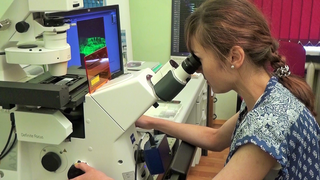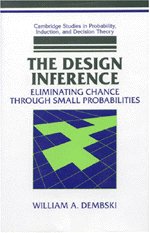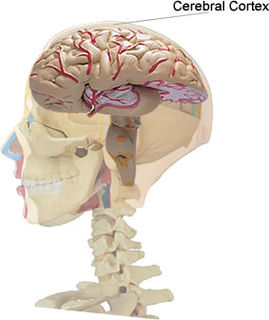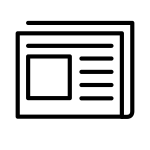
Empirical research is research using empirical evidence. It is also a way of gaining knowledge by means of direct and indirect observation or experience. Empiricism values some research more than other kinds. Empirical evidence can be analyzed quantitatively or qualitatively. Quantifying the evidence or making sense of it in qualitative form, a researcher can answer empirical questions, which should be clearly defined and answerable with the evidence collected. Research design varies by field and by the question being investigated. Many researchers combine qualitative and quantitative forms of analysis to better answer questions that cannot be studied in laboratory settings, particularly in the social sciences and in education.

The scientific method is an empirical method of acquiring knowledge that has characterized the development of science since at least the 17th century. It involves careful observation, applying rigorous skepticism about what is observed, given that cognitive assumptions can distort how one interprets the observation. It involves formulating hypotheses, via induction, based on such observations; experimental and measurement-based statistical testing of deductions drawn from the hypotheses; and refinement of the hypotheses based on the experimental findings. These are principles of the scientific method, as distinguished from a definitive series of steps applicable to all scientific enterprises.
A theory is a rational type of abstract thinking about a phenomenon, or the results of such thinking. The process of contemplative and rational thinking is often associated with such processes as observational study or research. Theories may be scientific, belong to a non-scientific discipline, or no discipline at all. Depending on the context, a theory's assertions might, for example, include generalized explanations of how nature works. The word has its roots in ancient Greek, but in modern use it has taken on several related meanings.
The Baconian method is the investigative method developed by Sir Francis Bacon, one of the founders of modern science, and thus a first formulation of a modern scientific method. The method was put forward in Bacon's book Novum Organum (1620), or 'New Method', and was supposed to replace the methods put forward in Aristotle's Organon. This method was influential upon the development of the scientific method in modern science; but also more generally in the early modern rejection of medieval Aristotelianism.
A teaching method comprises the principles and methods used by teachers to enable student learning. These strategies are determined partly on subject matter to be taught and partly by the nature of the learner. For a particular teaching method to be appropriate and efficient it has to be in relation with the characteristic of the learner and the type of learning it is supposed to bring about. Suggestions are there to design and selection of teaching methods must take into account not only the nature of the subject matter but also how students learn. In today's school the trend is that it encourages much creativity. It is a known fact that human advancement comes through reasoning. This reasoning and original thought enhances creativity.
An explanation is a set of statements usually constructed to describe a set of facts which clarifies the causes, context, and consequences of those facts. It may establish rules or laws, and may clarify the existing rules or laws in relation to any objects or phenomena examined.
Philosophy of psychology is concerned with the philosophical foundations of the study of psychology. It deals with both epistemological and ontological issues and shares interests with other fields, including philosophy of mind and theoretical psychology. Philosophical and theoretical psychology are intimately tied and are therefore sometimes used interchangeably or used together. However, philosophy of psychology relies more on debates general to philosophy and on philosophical methods, whereas theoretical psychology draws on multiple areas.
Investigative journalism is a form of journalism in which reporters deeply investigate a single topic of interest, such as serious crimes, political corruption, or corporate wrongdoing. An investigative journalist may spend months or years researching and preparing a report. Practitioners sometimes use the terms "watchdog reporting" or "accountability reporting."
A conceptual framework is an analytical tool with several variations and contexts. It can be applied in different categories of work where an overall picture is needed. It is used to make conceptual distinctions and organize ideas. Strong conceptual frameworks capture something real and do this in a way that is easy to remember and apply.

The extraterrestrial hypothesis (ETH) proposes that some unidentified flying objects (UFOs) are best explained as being physical spacecraft occupied by extraterrestrial life or non-human aliens, or non-occupied alien probes from other planets visiting Earth.

The Robertson Panel was a scientific committee which met in January 1953 headed by Howard P. Robertson. The Panel arose from a recommendation to the Intelligence Advisory Committee (IAC) in December 1952 from a Central Intelligence Agency (CIA) review of the U.S. Air Force investigation into unidentified flying objects, Project Blue Book. The CIA review itself was in response to widespread reports of unidentified flying objects, especially in the Washington, D.C. area during the summer of 1952.
The Rashomon effect is the situation in which an event is given contradictory interpretations or descriptions by the individuals involved, and is a storytelling and writing method in cinema meant to provide different perspectives and points of view of the same incident. The term, derived from the 1950 Japanese film Rashomon, is used to describe the phenomenon of the unreliability of eyewitnesses.

The Design Inference: Eliminating Chance through Small Probabilities is a 1998 book by American philosopher and mathematician William A. Dembski, a proponent of intelligent design, which sets out to establish approaches by which evidence of intelligent agency could be inferred in natural and social situations. In the book he distinguishes between 3 general modes of competing explanations in order of priority: regularity, chance, and design. The processes in which regularity, chance, and design are ruled out one by one until one remains as a reasonable and sufficient explanation for an event, are what he calls an "explanatory filter". It is a method that tries to eliminate competing explanations in a systematic fashion including when a highly improbable event conforms to a discernible pattern that is given independently of the event itself. This pattern is Dembski's concept of specified complexity. Throughout the book he uses diverse examples such as detectability of spontaneous generation and occurrence of natural phenomena and cases of deceit like ballot rigging, plagiarism, falsification of data, etc.

The term historical method refers to the collection of techniques and guidelines that historians use to research and write histories of the past. Secondary sources, primary sources and material evidence such as that derived from archaeology may all be drawn on, and the historian's skill lies in identifying these sources, evaluating their relative authority, and combining their testimony appropriately in order to construct an accurate and reliable picture of past events and environments.
Analytic induction is a research strategy in sociology aimed at systematically developing causal explanations for types of phenomena. It was first outlined by Florian Znaniecki in 1934. He contrasted it with the kind of enumerative induction characteristic of statistical analysis. Where the latter was satisfied with probabilistic correlations, Znaniecki insisted that science is concerned with discovering causal universals, and that in social science analytic induction is the means of discovering these.

Analytical skill is the ability to deconstruct information into smaller categories in order to draw conclusions. Analytical skill consists of categories that include logical reasoning, critical thinking, communication, research, data analysis and creativity. Analytical skill is taught in contemporary education with the intention of fostering the appropriate practises for future professions. The professions that adopt analytical skill include educational institutions, public institutions, community organisations and industry.
Data journalism or data-driven journalism (DDJ) is a journalistic process based on analyzing and filtering large data sets for the purpose of creating or elevating a news story.
The code of ethics in media was created by a suggestion from the 1947 Hutchins Commission. They suggested that newspapers, broadcasters and journalists had started to become more responsible for journalism and thought they should be held accountable.
Journalism culture is described as a "shared occupational ideology among newsworkers". The term journalism culture spans the cultural diversity of journalistic values, practices and media products or similar media artifacts. Research into the concept of journalism culture sometimes suggests an all-encompassing consensus among journalists "toward a common understanding and cultural identity of journalism."
Explanatory journalism or explanatory reporting is a form of reporting that attempts to present ongoing news stories in a more accessible manner by providing greater context than would be presented in traditional news sources. The term is often associated with the explanatory news website Vox, but explanatory reporting has also been a Pulitzer Prize category since 1988. Other examples include The Upshot by The New York Times, Bloomberg Quicktake, The Conversation, and FiveThirtyEight.








